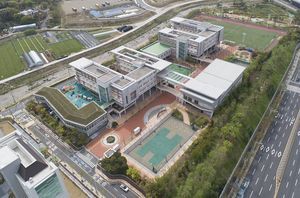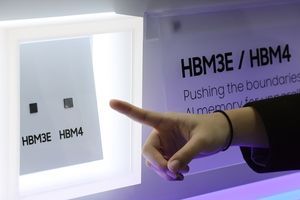The United States National Nuclear Security Administration (NNSA) has agreed to participate in developing Korea’s new research reactor. The U.S. will review and optimize the design of the export-oriented research reactor pilot model developed by Korea from a nuclear proliferation resistance perspective.
On the 22nd, Lee Chang Yoon, the First Vice Minister of Science and ICT, met with Jill Hruby, the U.S. Department of Energy’s Deputy Secretary for Nuclear Security and NNSA Administrator, to sign a joint statement for cooperation on the Proliferation Resistance Optimization-X (PRO-X) project.

The PRO-X (Proliferation Resistance Optimization-X) project is a program in which the U.S. Department of Energy and NNSA review and improve the design of research reactors to strengthen nuclear proliferation resistance. Nuclear proliferation resistance refers to the robustness of the technical barriers that make diverting nuclear materials generated in reactors difficult.
Under the Korea-U.S. PRO-X project cooperation, the U.S. national laboratories (ANL, SRNL) will review and optimize the design of Korea’s export-oriented research reactor pilot model from a nuclear proliferation resistance perspective and develop a reactor model that can flexibly change its layout according to the performance demanded by the customer country. Each country will support the budget for their respective research institutions.
The cooperation scope includes core design, nuclear fuel production facilities, and auxiliary facilities for medium-sized (thermal output 15~20 MWth scale) research reactors.
In the core design area, we will share and review the research reactor’s core conceptual design and facility layout with the U.S. and produce optimized design data with improved core performance and nuclear proliferation resistance. In the atomic fuel area, we will review and enhance the productivity and nuclear proliferation resistance of the high-density, low-enriched uranium nuclear fuel (HALEU) technology that Korea possesses. In the auxiliary facilities area, we will optimize the nuclear proliferation resistance of related facilities through design reviews of hot cells, nuclear fuel storage facilities, etc.

A Ministry of Science and ICT official explained, “The new research reactor that we agreed to cooperate on is a model that we plan to develop separately from the export-oriented research reactor currently under construction in Gijang, and its detailed specifications have not yet been determined.”
Both Korea and the U.S. expressed their expectation that this cooperation will contribute to countries wishing to introduce research reactors to do so responsibly under the principle of nuclear non-proliferation.
Meanwhile, Vice Minister Lee Chang Yoon and Administrator Hruby checked the progress and plans of joint research between Korean, U.S., and Japanese research institutions. The cooperation between research institutions in Korea, the U.S., and Japan is content to promote joint research and personnel exchange between three national laboratories under the U.S. Department of Energy (National Nuclear Security Administration) and research institutions in Korea and Japan, which was agreed upon at the Camp David Summit in August last year. Following the framework agreement in December last year, the Memorandum of Cooperation (MOC) containing detailed contents on cooperation forms and governance is about to be finalized.
First Vice Minister Lee Chang Yoon said, “The cooperation project with the U.S. core national laboratories has significant meaning in that it expands and qualitatively enhances science and technology cooperation,” and added, “We will closely communicate with the U.S. to make the nuclear proliferation resistance optimization cooperation a prime example of strengthening the nuclear non-proliferation cooperation system between the two countries.”










Most Commented